
Introduction: They determined that the height distance between the floor and Nba Basketball Rim Height should remain fixed at 10 feet (3. 05 meters) for different categories of NBA and college basketball. This height has remained constant right from the time the league was founded in 1946 and it has kept the goal post a fixed height for the players thus avoiding any distortions of the game. This is because the rim height has been set to 10-feet making it easy for players to practice and come up with various strategies out on the field.
The Standard and Regulation Height of Basketball Rims
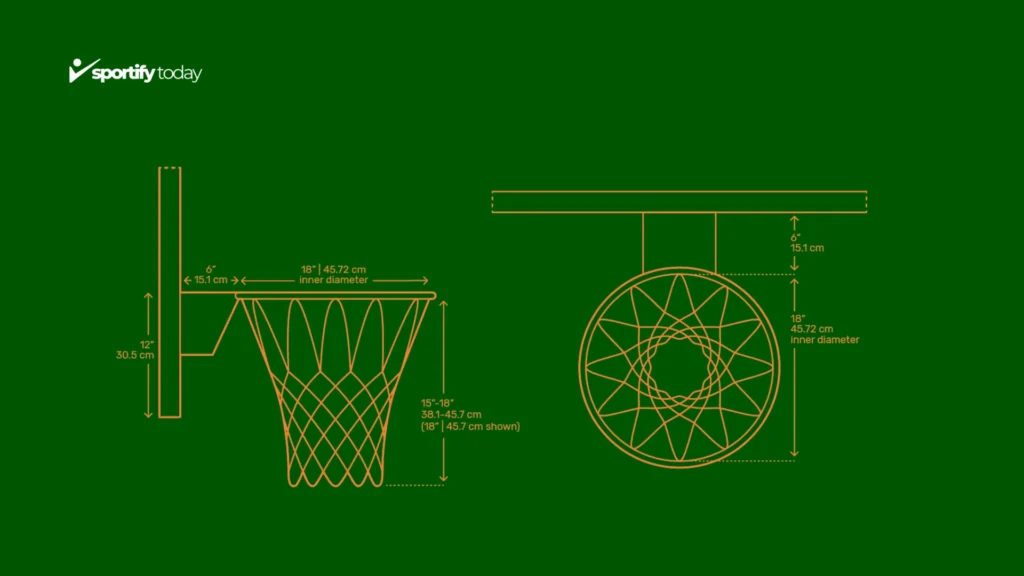
| Three-Point Line | Separates two-point from three-point shots, 23.75 feet from the basket. |
| Free-Throw Line | 15 feet from the backboard, where free throws are taken. |
| Paint (Key) | The rectangular area under the basket, limit of 3 seconds for offensive players. |
| Baseline | The boundary lines at each end, parallel to the backboard. |
| Center Circle | Located at midcourt, where the game starts with a jump ball. |
Basketball is a sport that needs certain measurements and dimensions both for reasons of fairness of the game’s performance as well as for the purposes of its unification for different levels of sport. Probably the most important factor of the game is the height of the basketball hoop and this has not changed since the inception of the sport.
Standard Height of a Basketball Rim
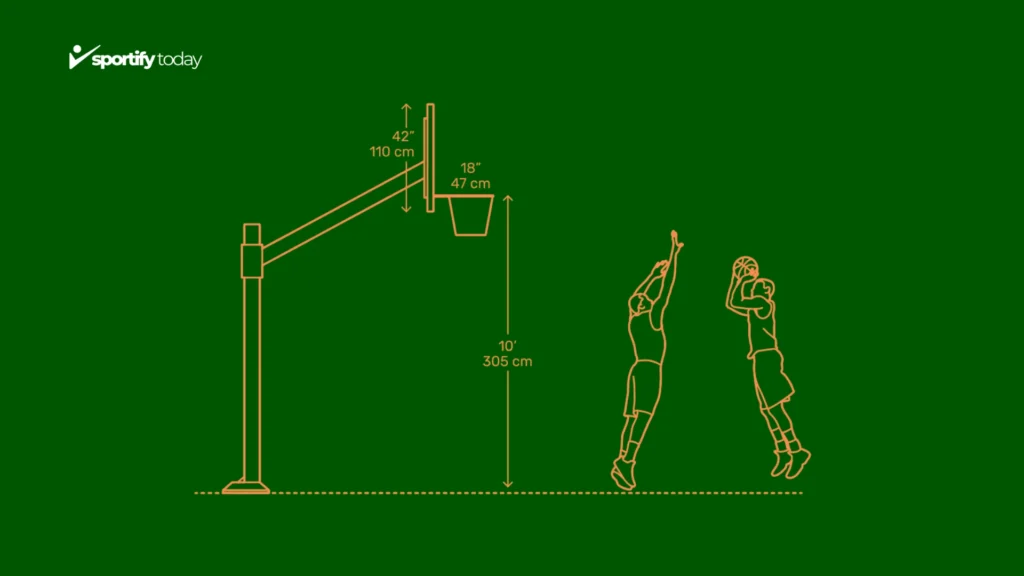
| Official Rim Height | Standard height is 10 feet (3.05 meters), used in NBA, FIBA, and NCAA. |
| Youth Basketball Height | For younger players, rims are adjusted to 8 to 9 feet. |
| Adjustable Rims | Recreational hoops range from 7 to 10 feet. |
The hoop for basketball is usually placed at a height of 10 feet (3. 05 meters) from the playing ground surface. This measurement has been used since the late 19th century when shooting sports started and has not changed in the NBA since it was formed in 1946.
The Regulation Height
| Regulation Rim Height | Standard rim height is 10 feet (3.05 meters), used in NBA, FIBA, and NCAA. |
| Youth Rim Height | For younger players, rims are adjusted to 8 to 9 feet. |
| Adjustable Rim | Recreational hoops adjust from 7 to 10 feet. |
basketball hoops must be placed at a 10-foot high so that the goal post will be a realistic challenge for every player – the final solution of the problem at hand – it will call for an optimum combination of skill, precision and sheer physical strength. This height is necessary to preserve the identity of the game, for the continuance of personal enhancements in the game as well as for monitoring of the game so as to amass an equitable height. The ever constant 10-feet rim height means that basketball indeed aims to level the play-field and it will probably remain this way, unchanged as basketball grows and progresses by insisting on the skill-set and invention of players in converting shots.
Importance of the NBA Basketball Rim Height
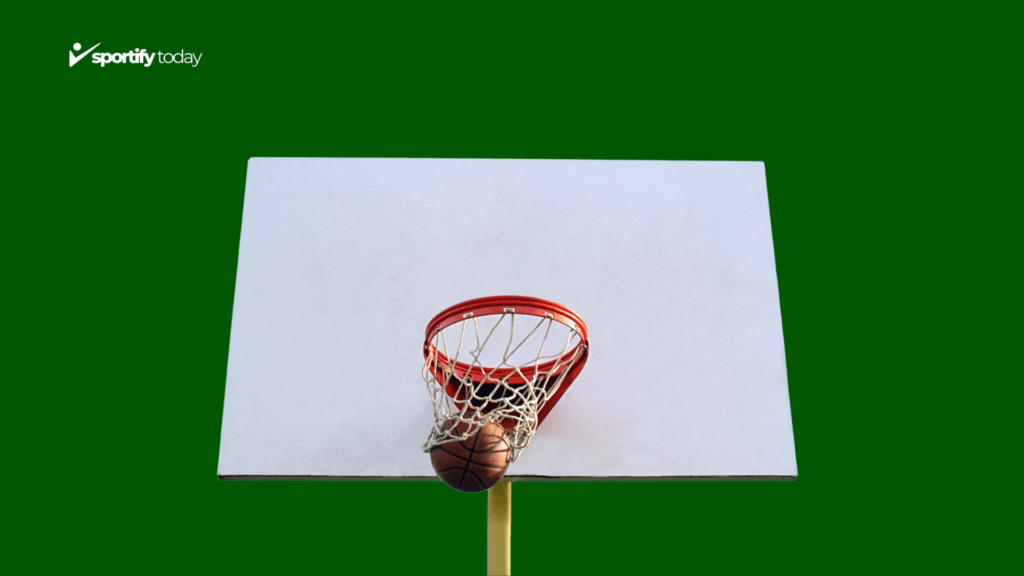
| Regulation Rim Height | Standard rim height is 10 feet (3.05 meters), used in NBA, FIBA, and NCAA. |
| Youth Rim Height | Rims are adjusted to 8 to 9 feet for younger players. |
| Adjustable Rim | Recreational hoops adjust from 7 to 10 feet. |
- Standardization
The 10-foot rim ensures uniformity across all levels, allowing players to develop skills in a controlled environment and refine techniques without adjusting to varying heights. - Skill Development
The challenging 10-foot target encourages players to hone shooting, jumping, and athleticism. Practicing from this height helps players adjust angles and trajectories for competitive success. - Game Strategy
Rim height impacts strategies, as players adapt offensive and defensive tactics to the 10-foot rim. Teams create effective plans that maximize strengths and exploit opponents’ weaknesses. - Fairness and Integrity
The standard height ensures all players face the same challenges, fostering a competitive environment where skill and strategy prevail over physical advantages. It upholds fair play and sportsmanship. - Excitement
High-flying dunks, long-range threes, and impressive layups are made possible by the 10-foot challenge. Player athleticism captivates audiences and enhances entertainment value. - History
The unchanged 10-foot height, established in 1891, reflects basketball’s commitment to tradition and continuity, serving as a reminder of the sport’s evolution. - Future
As basketball evolves, the 10-foot rim will likely remain a constant, challenging players and inspiring innovation in scoring techniques. It will continue shaping how players approach their craft.
Height of an NBA Basketball Rim

| Standard Height | Rim height is 10 feet (3.05 meters), used in pro leagues. |
| Youth Height | For youth, the height is adjusted to 8 to 9 feet. |
| Adjustable Hoops | Adjustable hoops range from 7 to 10 feet. |
| Backboard Size | Standard backboard size is 72 x 42 inches. |
The NBA basketball rim must be 10 feet (3. 05 meters) in height from the playing surface at any point in the world. This height is enforced in different professional basketball tournaments to maintain fairness in play and goals which players need to achieve during a game. The 10-foot rim height has been a standard feature of basketball since early days of NBA in 1946 and enables players hone their skills and master new tactics.
NBA Basketball Rim Height in Meters
| Standard Height | 10 feet (3.05 meters) |
The playing basket’s rim must be 3 inches in height for an NBA basketball game. To intimidate, the anti-foul zone must be placed at a further distance, that is, 05 meters from the playing surface. It is also noteworthy to mention that standard height is in practical use in all ranges of professional basketball levels so that the goal is set high for every player. Rim height of the basket has been standardized to 05-meter since the formation of NBA in 1946 this has enhanced the growth of players as well as the standard strategies.
The Importance of Understanding Basketball Rim Height for Players and Coaches
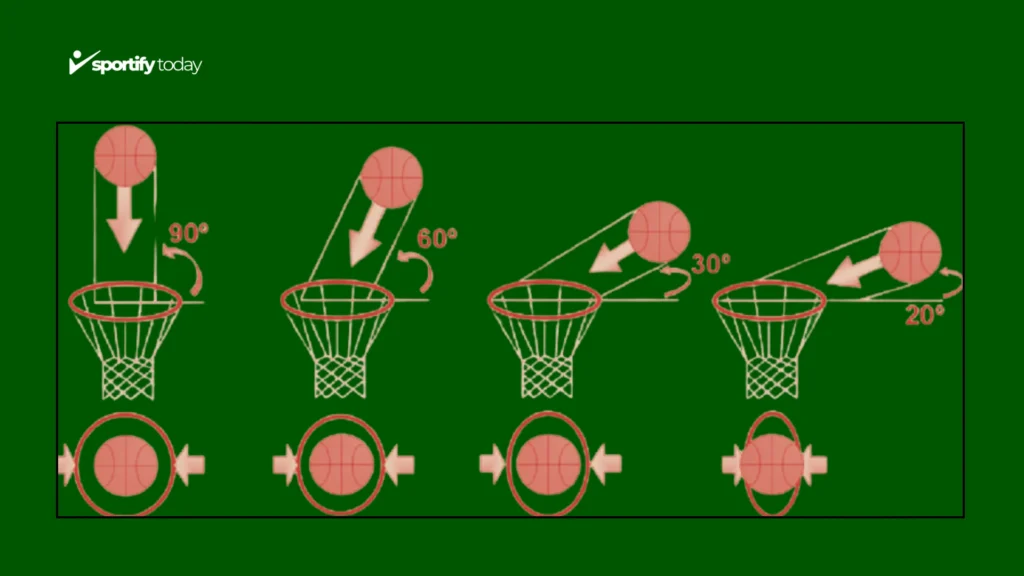
Understanding basketball rim height is crucial for both players and coaches, as it significantly impacts skill development, game strategy, and overall performance. Here’s why this knowledge is essential:
1. Skill Development
Knowing the standard rim height of 10 feet (3.05 meters) helps players focus on refining their shooting techniques, jumping abilities, and overall athleticism. Coaches can design training programs that emphasize shooting form, timing, and accuracy based on this consistent target.
2. Game Strategy
Understanding rim height influences game strategies. Players must adapt their offensive and defensive tactics to the 10-foot height. Coaches can develop effective game plans that leverage their team’s strengths while accounting for the challenges posed by the rim height.
3. Consistency in Training
With a uniform rim height, players can practice in a controlled environment, allowing them to build muscle memory and confidence. This consistency helps players transition smoothly from practice to competitive play.
4. Fairness and Equality
Recognizing that all players face the same rim height ensures a level playing field. Coaches can instill the values of fair play and sportsmanship, emphasizing that skill and strategy are paramount in the game.
5. Adapting to Different Levels
Understanding rim height is essential for coaches working with players of varying ages and skill levels. While younger players may practice on lower rims, transitioning to a 10-foot rim is crucial for their development as they progress in the sport.
6. Enhancing Game Enjoyment
For players and coaches alike, understanding the significance of rim height can enhance the enjoyment of the game. Players can take pride in their ability to score at the standard height, while coaches can celebrate their athletes’ growth and accomplishments.
Tips for Understanding NBA Basketball Rim Height
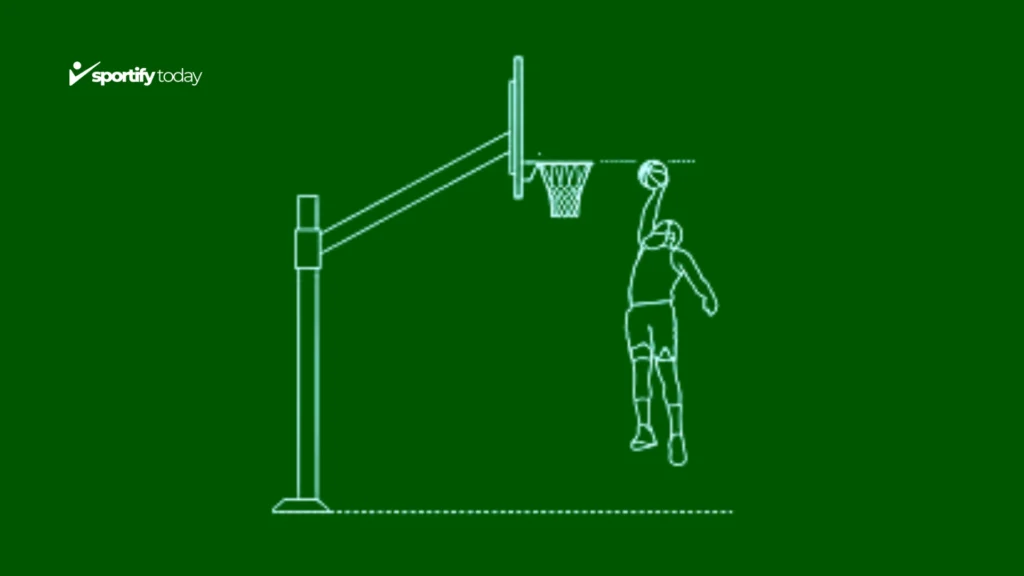
Understanding the height of the NBA basketball rim, set at 10 feet (3.05 meters), is essential for players and coaches alike. Here are some tips to effectively utilize this knowledge in training and gameplay:
1. Focus on Shooting Technique
Practice Consistently: Regular shooting practice at the 10-foot height helps players develop muscle memory and improve their shooting form.
Use Proper Footwork: Ensure that players are using correct foot positioning and balance when shooting to maximize accuracy.
2. Incorporate Drills
Shooting Drills: Include drills that specifically target shooting from different angles and distances while maintaining the 10-foot height.
Layup Drills: Focus on layup drills that emphasize proper technique and timing to score effectively at the rim.
3. Understand Game Strategy
Adapt Offense and Defense: Teach players how to adjust their offensive and defensive strategies based on the rim height. For example, guards may focus on perimeter shooting, while big men should work on post moves.
Utilize Screens: Encourage players to use screens effectively to create open shots at the rim.
4. Encourage Athleticism
Jump Training: Incorporate vertical jump training to help players improve their ability to reach the rim for layups and rebounds.
Strength Training: Focus on building overall strength to enhance shooting power and stability when attacking the basket.
5. Promote Fair Play
Emphasize Equality: Remind players that all competitors face the same rim height, fostering a sense of fairness and sportsmanship.
Encourage Teamwork: Highlight the importance of teamwork in overcoming challenges related to scoring at the 10-foot height.
6. Monitor Progress
Track Improvement: Keep records of players’ shooting percentages and other metrics to monitor progress over time.
Provide Feedback: Offer constructive feedback to help players refine their techniques and strategies.
7. Adapt for Younger Players
Use Adjustable Rims: For younger athletes, consider using adjustable rims during practice to help them build confidence before transitioning to the standard height.
Focus on Fundamentals: Emphasize the fundamentals of shooting and ball handling, regardless of rim height.
Basketball Rims & Nets Dimensions
Understanding the dimensions of basketball rims and nets is essential for players, coaches, and anyone involved in the sport. These specifications ensure consistency and fairness in gameplay across different levels of competition. Here’s a breakdown of the key dimensions:
1. Basketball Rim Dimensions
Height: The standard height of a basketball rim is 10 feet (3.05 meters) from the playing surface.
Diameter: The rim has a diameter of 18 inches (45.72 cm). This size is consistent across all levels of play, including the NBA, NCAA, and FIBA.
Material: Typically made of steel or other durable materials, rims may also feature a breakaway design that allows for flexing during dunks to prevent damage.
2. Basketball Net Dimensions
Length: The standard length of a basketball net is 15 inches (38.1 cm) from the rim to the bottom of the net.
Material: Nets are usually made from nylon or other synthetic materials, designed to withstand wear and tear from regular use.
Hanging Style: The net is typically attached to the rim using hooks or loops, allowing it to sway and create a pleasing visual effect when a basket is made.
3. Backboard Dimensions
Height: The backboard is usually 6 feet (1.83 meters) tall.
Width: The standard width of a backboard is 3.5 feet (1.07 meters).
Material: Backboards are commonly made from tempered glass, acrylic, or fiberglass, providing a clear view for spectators and players.
4. Additional Considerations
Clearance: The area directly beneath the rim should have a clear space of at least 4 feet (1.22 meters) to allow players to move freely while attempting shots or rebounds.
Three-Point Line: While not part of the rim or net dimensions, understanding the distance of the three-point line (which varies by league) is essential for players aiming to shoot from beyond the arc.
Conclusion : The NBA basketball rim height of 10 feet (3.05 meters) is a fundamental aspect of the game, ensuring consistency and fairness across all levels of play. This standard height challenges players to develop their skills and strategies, enhancing the overall excitement of basketball.
Also read: Sports Equipment For Basketball Players

Leave a Reply